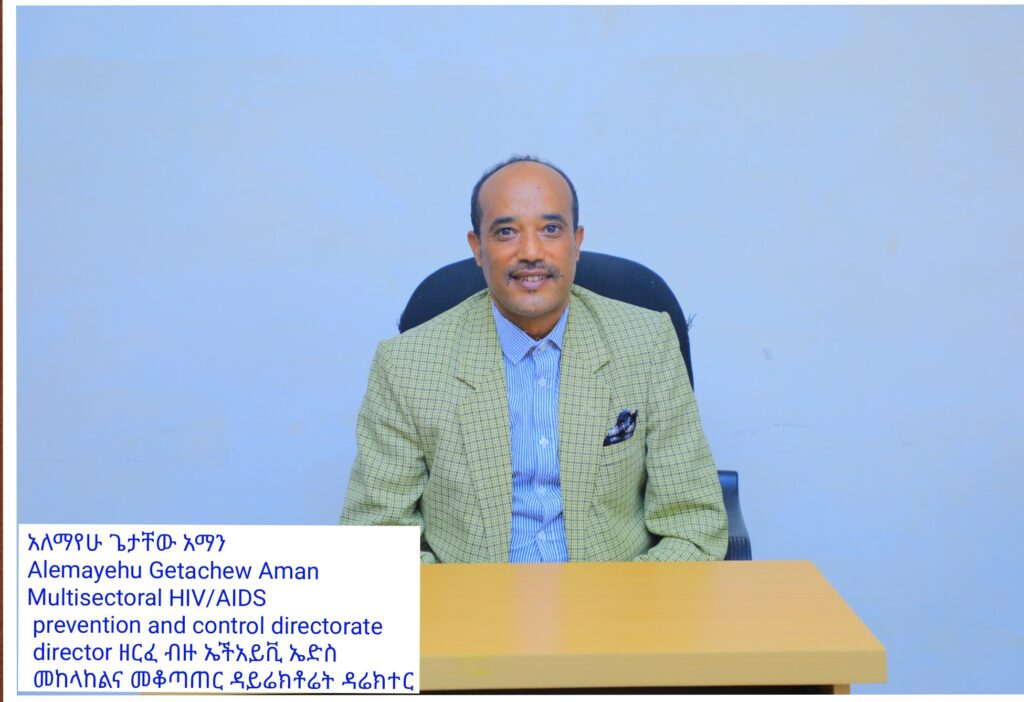Multisectoral HIV/AIDS Prevention and Control Directorate

The Multisectoral HIV/AIDS Prevention and Control Directorate under the Central Ethiopia Regional Health Bureau (CERHB) is responsible for leading, coordinating, and implementing the regional response to HIV/AIDS. This directorate plays a crucial role in reducing new HIV infections, improving the quality of life for people living with HIV/AIDS (PLHIV), and integrating HIV/AIDS programs into broader health and development initiatives.
It operates through a multisectoral approach, engaging government institutions, civil society organizations (CSOs), health facilities, private sector partners, and development partners to achieve a comprehensive and sustainable HIV/AIDS response in the Central Ethiopia Region
Objectives of the Multisectoral HIV/AIDS prevention and control directorate:
Prevent New HIV Infections
- Strengthen HIV prevention strategies, focusing on evidence-based biomedical, behavioral, and structural interventions.
- Promote HIV risk reduction interventions, including condom distribution, voluntary medical male circumcision (VMMC), and Pre-Exposure Prophylaxis (PrEP).
- Conduct awareness and behavioral change communication (BCC) campaigns to promote safe sexual practices, particularly among youth and key populations.
- Address social determinants of HIV risk, such as gender-based violence (GBV), stigma, and discrimination.
Expand and Strengthen HIV Testing, Treatment, and Care Services
- Increase access to HIV Testing Services (HTS) through facility- and community-based approaches.
- Ensure timely initiation and adherence to Antiretroviral Therapy (ART) for PLHIV to achieve viral suppression.
- Integrate HIV testing in maternal and child health (MCH) services, including Prevention of Mother-to-Child Transmission (PMTCT).
- Improve Early Infant Diagnosis (EID) and treatment for HIV-positive children.
- Strengthen HIV-TB co-infection management by integrating services at health facilities.
Strengthen Multisectoral and Community-Based HIV Response
- Engage key government sectors (e.g., health, education, labor, social affairs, youth, and women’s affairs) in HIV/AIDS response.
- Foster collaboration with CSOs, community-based organizations (CBOs), and the private sector to implement community-led HIV programs.
- Integrate HIV interventions into broader health and social protection programs, including economic empowerment initiatives for PLHIV.
Improve Access to HIV Services for Key and Vulnerable Populations:
- Implement targeted interventions for high-risk groups, including sex workers, truck drivers, men who have sex with men (MSM), prisoners, and people who inject drugs (PWID).
- Provide stigma-free and confidential HIV services, ensuring human rights-based approaches.
- Strengthen peer-led outreach programs to enhance service uptake among key populations.
Sustain Resource Mobilization and HIV/AIDS Financing
- Advocate for increased domestic and international funding for HIV/AIDS programs in the region.
- Strengthen financial management and accountability for HIV/AIDS resources.
- Promote sustainable financing mechanisms, including health insurance and integration of HIV services into Universal Health Coverage (UHC).

